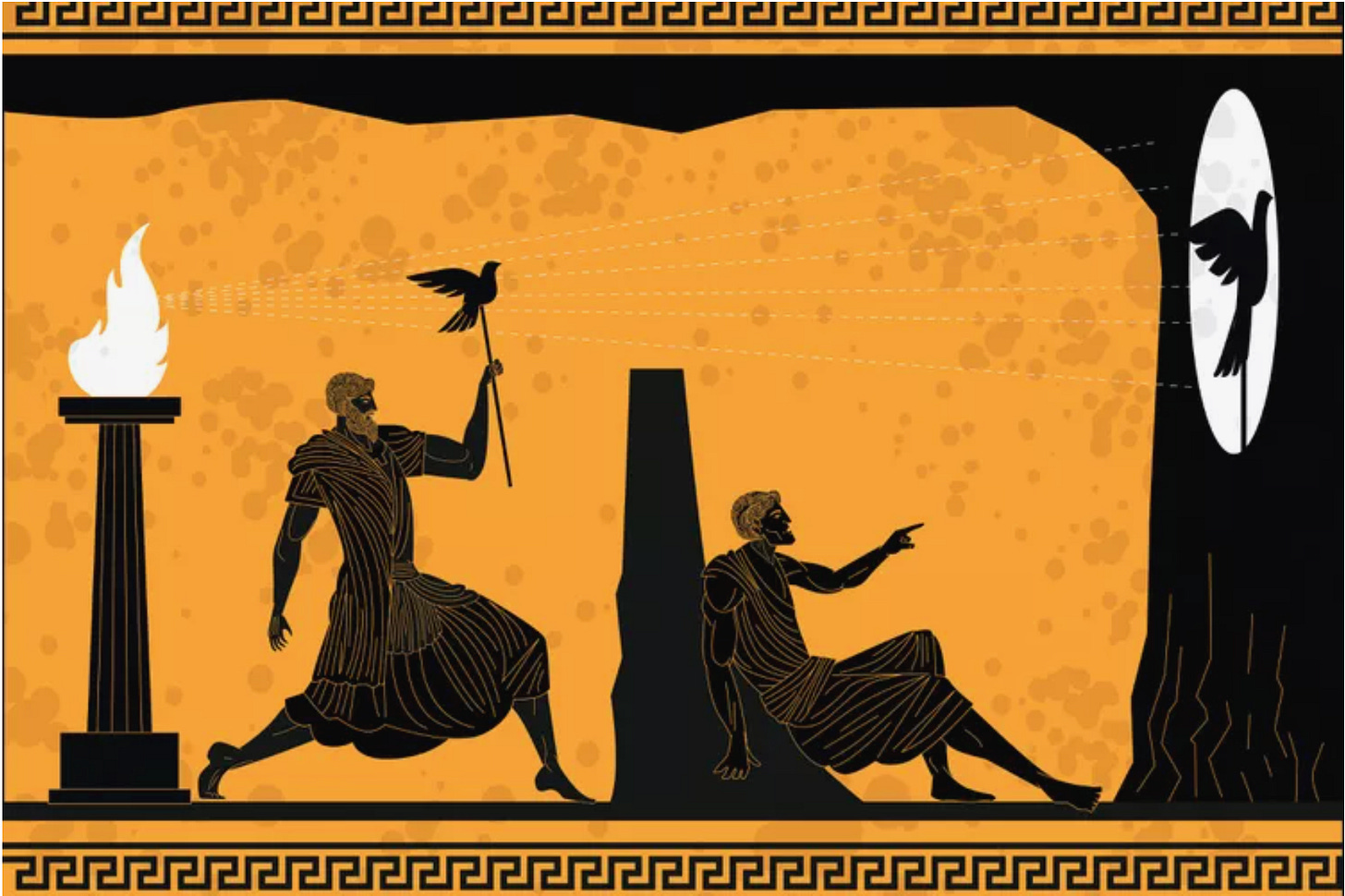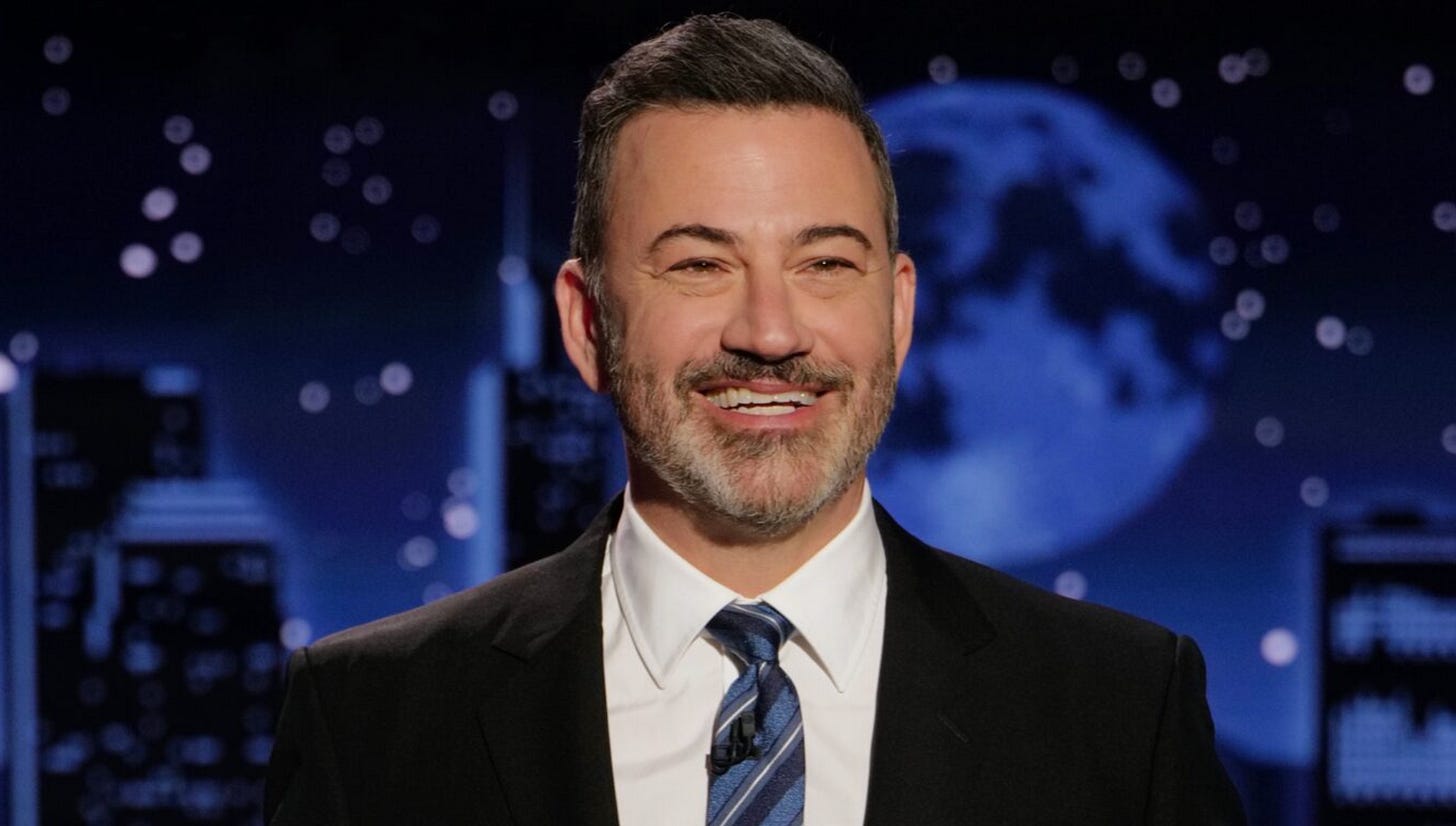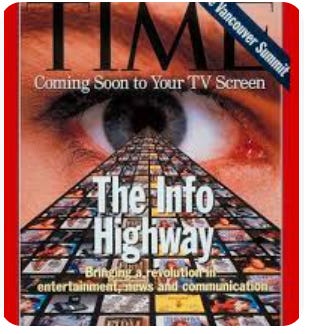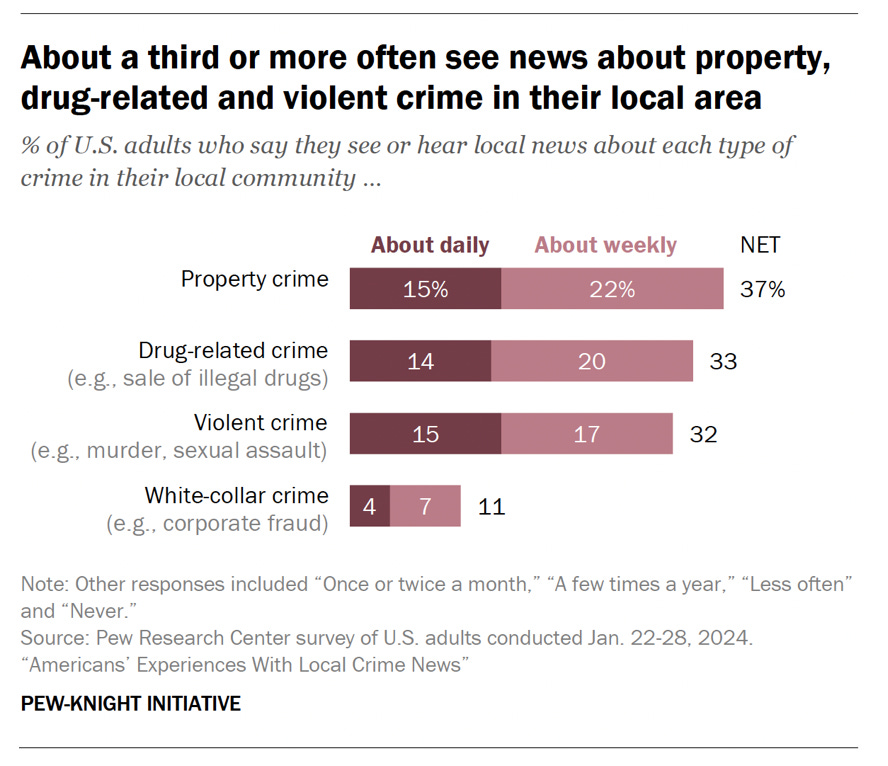Jimmy Kimmel Live! Lives On While the Oligarchs' Power Grab Rolls On
What the Kimmel dustup tells us about the demise of free speech
I’ll admit it: through these months of galloping authoritarianism, Jimmy Kimmel’s return made me smile. But I don’t want us to lose perspective on how much has—and hasn’t—been accomplished. Remember: Disney didn’t “defend” Kimmel on First Amendment grounds by bringing him back; it executed brand-risk management. Consumer backlash forced a tactical retreat, but the structural problems that led us here remain untouched.
In my last post, I wrote about our tendency to ignore John Dewey’s observation a century ago that “politics is the shadow cast on society by big business.” In this piece, I’ll continue in that framework, now making five observations about the shadow-casters that drive these larger structural problems with our media, and those who enable them.
Oligarchs have captured our media institutions—and both Republicans and Democrats helped them, through deregulation and deference. The system now funnels truth into paywalled silos for those who can afford it, while media oligarchs grab more and more right out in the open, amplifying propaganda, creating immunity from accountability, and dangerously narrowing our public square.
1) Privatizing Censorship
This incident exposes how censorship actually works in America now. Kimmel’s suspension and un-suspension were both business decisions. Kimmel’s suspension was not only the product of Disney bowing directly to Trump or FCC chair Brendan Carr, but of right-wing-controlled local affiliates who moved first. Nexstar Media Group and the Sinclair Broadcast Group, which together reach nearly a quarter of ABCs national audience, moved first, suspending the show for their affiliates. For them, FCC Chair Brendan Carr’s “we can do it the easy way or the hard way” was not a threat to avoid but a pretext to seize. But, once the outrage started streaming in, Disney’s cost-benefit analysis changed, especially as the controversy coincided with a planned increase in the cost of their streaming services.
Americans treat state censorship as the ultimate tyranny and are primed to resist it. But the First Amendment only protects us from the state. It does nothing when corporations do the same work—throttling posts, disciplining employees for tweets, suspending comedians. You have no constitutional shield against Disney, Nexstar, Sinclair, Meta, or your boss. (Endnote1) That is the contradiction: we rally when government intrudes, but accept as natural the daily ways corporations limit speech. In practice, censorship has been privatized. (Endnote2)
2) Oligarchs Captured the Media
Once, we understood the danger of concentrated megaphones. Our laws barred networks from owning more than a handful of affiliates because monopoly control over communication betrays the very premise of democracy: that our voices count equally. Industry lobbying dismantled those limits—and oligarchs rushed in.
Start with the immediate example—local television. Broadcast TV, still the most-trusted news source for many Americans, has become a delivery system for a single, right-wing perspective. Nexstar controls affiliates reaching the legal maximum 39% of U.S. households (and is currently in the process of a merger that, if Trump’s FCC approves, will put them over that limit); the Smith family’s Sinclair reaches another 39%; Hilton Howell, the CEO of the third largest media conglomerate, Gray Media, is also a Trump booster.
Online, Elon Musk turned X into a megaphone for conspiracies; Mark Zuckerberg gave Trump bespoke rule-bending in 2016; Larry Ellison is maneuvering to shape TikTok’s U.S. future; vertically integrated media conglomerates decide which projects get greenlit, which stars get bookings, and which controversies die in legal or corporate affairs before a newsroom can touch them. That’s the quiet censorship: not “you can’t say that on air,” but “this never makes the rundown, the segment budget, the invite list, or the platform.”
The effects show up everywhere: opinion diversity shrinks, “news deserts” spread, and community papers collapse while conglomerates script anchors. Politicians bend to these choke points because you cannot reach the public without passing through them. And in integrated conglomerates, the corporate parent—not the news division—decides what’s “best for the company,” often after legal settlements or advertiser threats signal what not to touch. (Endnote3)
As we’ve seen in Hungary under Viktor Orbán, you don’t need state-run media to dominate the public square if you have sympathetic oligarchs to do the work for you. Private ownership captured by loyalists has done the job of state propaganda more effectively than nationalization ever could. Trump and the MAGA movement have been taking notes. Orbán is no distant cautionary tale — he is a model, openly admired by Trump allies and right-wing strategists who see in Hungary a playbook for consolidating media power without ever declaring it state-run.
3) Democrats’ Deal with the Devil
None of this was inevitable. Democrats helped engineer much of it.
To be clear, Republican administrations from Reagan through Trump consistently pushed deregulation further—eliminating community service obligations, reviving the “UHF discount” to enable bigger mergers, and approving cross-ownership deals that let conglomerates dominate local markets. (Endnote4)
For decades, Democrats had opposed these efforts to deregulate and had treated communications policy as a public good. But in the 1990s, Bill Clinton and the Democratic Leadership Council broke with this tradition and embraced deregulation as a badge of modernity. Instead of a public good, they treated media as just another market. The DLC chased donor money and Silicon Valley cachet. The 1996 Telecommunications Act tore down most of the remaining guardrails. Democrats weren’t just trying to look “pro-business.” They were techno-optimists. Al Gore’s paeans to the “information superhighway” captured a mood that saw digital technology as inherently democratizing.
That was the deal with the devil. Democrats traded labor and consumer support away for corporate cash and techno-optimism. (To be clear, until recently, subsequent administrations did little to disrupt this pattern, and a similar mood persists today, as can be seen by the Democrats who voted for the GENIUS crypto bill.) They assumed the “new economy” would cement a lasting majority. Instead, they built a media ecosystem ripe for capture by conservative oligarchs that turned on them when the Biden administration later tried to revive antitrust enforcement and floated AI guardrails. Musk and Ellison attacked; Zuckerberg and other tech barons enjoyed front-row seats at Trump’s inaugural. Democrats quickly discovered that what they took to be true love was transactional, a marriage of convenience.
The Hungarian case shows where this logic ends. Viktor Orbán’s allies, men like Lőrinc Mészáros, bought up outlets, starved critical media, and saturated the air with propaganda. CPAC even decamped to Budapest to celebrate the model. MAGA strategists cite Orbán openly. They don’t need state-run television. They need oligarchs who censor on their behalf. Without robust guardrails, they’ve paved a superhighway to disinformation and social collapse.
4) Don’t Know, Can’t Yell
“But there are more choices than ever,” the counterargument goes. In theory. In reality, fewer corporations decide what gets visibility. Cable bundles impose a “Fox tax” on every subscriber: Rupert Murdoch’s network takes in $5–10 billion a year in carriage fees, whether you watch or not. And while consumer backlash could challenge bundling, it hasn’t. People are far more likely to rally around a narrow flashpoint—say, a single host or program—than to demand the broader policy changes that would alter the system itself.
Positive censorship is the easy part to see. It generates headlines and hashtags. Disney suspends a comedian. A platform pulls a book. Right wing politicians try to ban particular books from schools or insist on whitewashing American history. We know how to name it.
Negative censorship is harder. It is the silence about what matters most: from the corporate crime that ruins working people’s lives, to the corruption that has metastasized throughout the political system. The oligarchic media system ensures these remain invisible.
When billionaires own the media, you know what doesn’t get covered? Billionaires.
Start with money. In 2023–24 alone, media companies spent $550 million on politics and $1.6 billion lobbying. Business overall spent $6.6 billion on elections and $7.5 billion lobbying—85 percent of all reported expenditures. Elon Musk personally spent nearly $300 million. Yet coverage treats fundraising only as a sport: which candidate is “good at raising money,” not which coalitions of capital are buying policy. The data is free at OpenSecrets, but reporters rarely bother to use it. For all the smug chattering about how Democrats lost the working class by listening to “the groups,” we hear next to nothing about how catering to a corporate class devoted to union-busting and labor precarity has taken the policies that would actually help working people off the table altogether.
Or look at corporate crime. Street crime dominates local newscasts. Corporate crime barely registers. When it does, it’s framed as scandal or accident, not a systemic or deliberate practice. For example, wage theft costs more than $50 billion a year, but we never see it covered, let alone bosses perp-walked out of their offices. Jennifer Taub’s Big Dirty Money (2020) and Rena Steinzor’s Why Not Jail? (2015) document how white-collar crimes dwarf street crime in costs but receive sparse coverage. Media prioritizes homicides and thefts, while wage theft, financial fraud, and corporate malfeasance are episodic “scandals.”
According to Pew Research, public opinion in 2024 mirrors the imbalance: 33% of Americans see violent crime weekly in local news, but only 11% say they see white-collar crime that often. The invisibility is systemic, not accidental.
This is censorship as self-interest. It doesn’t declare “you can’t say that.” But, in practice, it ensures you won’t hear about it.
5) Truth Is a Luxury Good
When oligarchs capture the mass audience, truth becomes a luxury good, only available behind costly paywalls. The New York Times and Washington Post put investigative work behind subscriptions. Academic research sits behind JSTOR. The sharpest satire—Last Week Tonight, premium podcasts—lives behind paid services. Even Raoul Peck’s devastating anti-imperialist essay film, Exterminate All the Brutes, streams only on Max. Capitalism commodifies everything, including its own indictment, packages it for elites, and leaves everyone else outside the gate.
We pay two ways: First, those who cannot afford it don’t have access to the highest-quality information. Those without subscriptions depend on broadcast/local outlets dominated by Nexstar, Sinclair, and Fox. Second, elites inside the paywall bubble assume everyone shares their knowledge, projecting their media diets onto people who live in entirely different information worlds. That miscalculation explains elite shock when Trump or MAGA wins; they assume all his voters are as informed about his intentions as they are. The paywall doesn’t just stratify; it erodes solidarity. Insiders underestimate outsiders’ information scarcity; strategists misread what “everyone knows.”
And the paywall isn’t the only problem: the proliferation of Substacks, blogs, and podcasts gives the illusion of healthy pluralism while the baseline of shared knowledge erodes. A marketplace of ideas is not healthy just because opinions proliferate. It also requires a shared floor of facts everyone knows to be true. Under oligarchic control, that floor is vanishing.
Conclusion
Censorship has been privatized, and we behave as if it were natural. Oligarchs decide which voices survive. Governments lean on them as shadow enforcers. Strategists declare “normalcy,” file the press release, and move on. The system hums along—broken only when a clumsy misstep, like Brendan Carr’s cartoonish “we can do this the easy way or the hard way,” momentarily reveals the machinery.
That cycle ends only when we confront the world Democrats and Republicans built—with little resistance from civil society institutions: monopolized media, deregulated platforms, paywalled truth, privatized speech. It ends only when we stop accepting the contradiction between our bursts of outrage at egregious state censorship of individuals, and our indifference to an even more egregious daily reality: that right-wing media oligarchs and conglomerates decide not only what can and cannot be said, but more insidiously, what we are likely—or unlikely—to know, all in service of their political agendas or corporate bottom line.
Weekend Reading is edited by Emily Crockett, with research assistance by Andrea Evans.
In Private Government, Elizabeth Anderson makes the point that “We are told that our choice is between free markets and state control, when most adults live their working lives under a third thing entirely: private government.” She asks us to:
Imagine a government that assigns almost everyone a superior whom they must obey. Although superiors give most inferiors a routine to follow, there is no rule of law. Orders may be arbitrary and can change at any time, without prior notice or opportunity to appeal. Superiors are unaccountable to those they order around. They are neither elected nor removable by their inferiors. Inferiors have no right to complain in court about how they are being treated, except in a few narrowly defined cases. They also have no right to be consulted about the orders they are given.(p. 37)
Indeed, she calls (non-union) corporations “communist dictatorships” that not only govern our work lives, but also have:
… the legal authority to regulate workers’ off-hour lives as well—their political activities, speech, choice of sexual partner, use of recreational drugs, alcohol, smoking, and exercise. Because most employers exercise this off-hours authority irregularly, arbitrarily, and without warning, most workers are unaware of how sweeping it is.
Under the U.S. default of at-will employment, working people might be shocked to learn that they can be fired “for their off-hours Facebook postings, or for supporting a political candidate their boss opposes.” (39-40)
Anderson diagnoses this as “a kind of political hemiagnosia: like those patients who cannot perceive one-half of their bodies, a large class of libertarian-leaning thinkers and politicians, with considerable public following, cannot perceive half of the economy: they cannot perceive the half that takes place beyond the market, after the employment contract is accepted. (57-58)
The state-action doctrine narrows constitutional protections to government conduct. In The Civil Rights Cases (1883), the Supreme Court struck down federal protections against discrimination by private businesses, gutting Reconstruction, and in Cruikshank, they overturned the convictions in the Colfax Massacre. The First Amendment likewise binds “Congress,” not corporations. Hence, the corporations routinely do what governments cannot: demoting political content on social media sites, firing employees for their tweets.
The FCC once capped national reach at 25%, later 39%. Cross-ownership rules (1975) barred companies from controlling both a newspaper and a TV station in the same market. The Fairness Doctrine required broadcasters to air contrasting viewpoints on controversial issues (repealed 1987). The 1996 Telecommunications Act loosened caps and spurred mergers. Nexstar’s proposed Tegna deal would push reach near 80%—obliterating the spirit of the caps. Sinclair’s must-runs (see John Oliver’s 2018 segment) showed how centralized scripts replace local journalism. Murdoch’s waivers (e.g., NYC cross-ownership) entrenched vertically integrated empires. On the ground: more than 2,500 newspapers have closed since 2005; half of newsroom jobs have vanished since 2008; tens of millions now live in partial or full news deserts. Concentration slashes reporters, homogenizes coverage, and lets governments nudge private choke points to do indirectly what the Constitution forbids them to do directly.
The old architecture of U.S. media regulation—Fairness Doctrine, cross-ownership limits, national caps—was designed to protect pluralism. Reagan’s FCC began dismantling it in the 1980s, scrapping the Fairness Doctrine in 1987, loosening ownership caps, and green-lighting early cable consolidation. That deregulation created the structural opening for the rise of right-wing talk radio. Once broadcasters were no longer required to present contrasting viewpoints on controversial issues, stations discovered a lucrative business model in outrage programming. Rush Limbaugh’s national syndication, which began in 1988, was the direct product of the Fairness Doctrine’s demise. Local AM stations, many of them struggling, suddenly found a profitable niche in wall-to-wall conservative commentary, reshaping the ideological soundscape of America.
Republican administrations deepened this trajectory. They revived the “UHF discount,” enabling larger mergers, and steadily approved cross-ownership deals that let conglomerates dominate local markets. By the time Fox News launched in 1996, the regulatory groundwork for a consolidated, partisan media ecosystem was already in place.
For detailed accounts of how deregulation and right-wing media power intertwined, see Nicole Hemmer’s Messengers of the Right (on the infrastructure of conservative media), Brian Rosenwald’s Talk Radio’s America (on how Limbaugh and his imitators built a political force out of deregulated AM radio), Anne Nelson’s Shadow Network (on the organized money and religious right that exploited these openings), and Thomas Edsall’s Building Red America (on how media strategy was married to conservative coalition-building). Together, they show how deregulation was not just economic policy — it was the precondition for a new partisan propaganda machine.






Your essay is excellent! Informative as heck and painfully disturbing. I know you are 100% correct in everything you say. I am having trouble seeing a way to get our media back from the right wing extremist oligarchs who own 39% of the media x 2 and are trying to grab more. Damn the democrats who went along with all this deregulation and sucking up to lobbyists. Clinton has turned out to be worse and worse as the truth is revealed. We know the republicans hate human beings, and now we can’t trust the democrats. We must take back our right to regulate the public airwaves.
I see a lot of problems here, but not a lot of solutions. I see break up big media conglomerates, and regulate the media more. But the Kimmel situation was literally caused by the threat of government regulation and not allowing a merger... I just don't see a good way for the government to regulate the media that can't be taken advantage of by a bad actor.